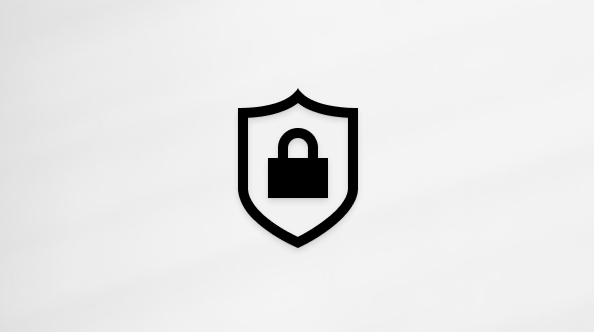Manage breakout rooms in Microsoft Teams
Foster connections and meaningful discussions in medium to large Teams meetings by creating breakout rooms. Create and manage breakout rooms when you use Teams for desktop to organize a meeting with up to 300 people.
To learn more about participating in breakout room sessions, see Join a breakout room in Microsoft Teams meetings.
Notes: These features aren't currently available in breakout rooms:
-
Adding people to the meeting from the participant's panel
-
Adding additional people to the meeting chat
-
Copying the Join meeting info
In this article
Create breakout rooms
To create breakout rooms, you must be a meeting organizer or a presenter in the meeting organizer's organization who's been appointed a breakout rooms manager.
To create breakout rooms before a meeting:
-
Select Calendar

-
Double-click a meeting to expand its details.
-
Select Breakout rooms > Create rooms.
-
Choose the number of rooms you want (up to 50).
-
Select Add rooms.
-
Select Assign participants

-
Choose how you want participants to be assigned.
-
Select Next > Save.
If you create breakout rooms before a meeting starts, you can invite up to 300 people. As soon as the meeting starts, you can open the breakout rooms.
To create breakout rooms during a meeting:
-
Select Rooms

-
Choose the number of rooms you want to create (up to 50).
-
Choose how you want participants to be assigned.
-
Select Create rooms.
To add another breakout room during the meeting, select Rooms 

Note: You won't be able to automatically assign people to breakout rooms later in the meeting.
Manage breakout room settings
Adjust breakout room settings before a meeting to ensure your meeting and rooms run smoothly. Choose how participants will be assigned to rooms, set room time limits, and more.
Room settings are flexible and can also be changed during the meeting. Rename rooms, open and close them, and make other adjustments as you go.
To manage breakout room settings before a meeting:
-
Select Calendar

-
Double-click a meeting to expand its details.
-
Select Breakout rooms > Rooms settings

-
Select Save to apply changes.
To manage breakout room settings during a meeting:
-
Select Rooms

-
Select Rooms settings

-
Select Save to apply changes.
Set breakout room time limits
Set breakout room time limits to keep your meeting on-track across breakout rooms. Rooms will automatically close when the time expires and participants will rejoin the main meeting.
Note: Turn off the Automatically move people to rooms toggle in breakout room settings to allow participants to either rejoin the main meeting or leave altogether after time expires.
To set a breakout room time limit before a meeting:
-
Select Calendar

-
Double-click a meeting to expand its details.
-
Select Breakout rooms > Rooms settings

-
Turn the Set a time limit toggle on.
-
Set a time limit using the dropdown menus.
-
Select Save.
To set a breakout room time limit during a meeting:
-
Select Rooms

-
Select Rooms settings

-
Turn the Set a time limit toggle on.
-
Set a time limit using the dropdown menus.
-
Select Save.
Appoint breakout room managers
Appoint breakout room managers in a meeting for more help managing the rooms. Breakout room managers can:
|
|
|
|
|
|
|
To make someone a breakout room manager, first invite them to the meeting and make them a presenter. To learn more, see Roles in Microsoft Teams meetings.
To appoint breakout room managers before a meeting:
-
From your Teams calendar, select a meeting to view details.
-
Select Breakout rooms > Rooms settings

-
Turn the Assign presenters to manage rooms toggle on.
-
Select Search for presenters and designate room managers.
-
Select Save.
To appoint breakout room managers during a meeting:
-
In the meeting controls, select Rooms

-
Select Rooms settings

-
Turn the Assign presenters to manage rooms toggle on.
-
Choose presenters from the dropdown menu.
-
Select Save.
Manage breakout rooms
Only one breakout manager can take control of breakout rooms at a time.
To take control of breakout rooms as a breakout room manager:
-
Select Rooms

-
Select Manage rooms.
You’re now in control of the breakout rooms. Join open rooms, make announcements, and more.
Rename breakout rooms
If you want, rename a breakout room to reflect its purpose (for example, what people in that room will be discussing or working on).
To rename a breakout room before a meeting:
-
Select Calendar

-
Double-click a meeting to expand its details.
-
Select Breakout rooms.
-
Hover over the room you want to rename.
-
Select More options


-
Enter a new name.
-
Select Rename.
To rename a breakout room during a meeting:
-
Select Rooms

-
Hover over the room you want to rename
-
Select More options


-
Enter a new name.
-
Select Rename.
Assign and reassign people to breakout rooms
Meeting organizers and appointed breakout room managers can assign and reassign people to breakout rooms. Breakout room managers must first join the meeting to assign people to rooms.
To assign and reassign people to breakout rooms before a meeting:
-
Select Calendar

-
Double-click a meeting to expand its details.
-
Select Breakout rooms.
-
Select Assign participants

-
In the Room

-
Select the room you want to assign them to.
-
Select Save.
To assign and reassign people to breakout rooms during a meeting:
-
Select Rooms

-
Select Assign participants.
-
Manually assign each person to a room or select Shuffle
-
Select Save.
To assign channel members to breakout rooms before a channel meeting, you must first join the meeting:
-
Open Teams on your desktop and go to your team channel.
-
Select Breakout rooms.
-
Select Assign participants and sort channel members into breakout rooms.
Meetings with breakout room capabilities are limited to 300 participants. If a channel contains more than 300 members, you won’t be able to assign people to rooms before the meeting.
Room assignments in recurring meetings
When an organizer assigns people to breakout rooms in a meeting series, the room assignments will apply to future meeting occurrences unless the organizer manually changes them.
Shuffle people across breakout rooms
Randomly assign participants to breakout rooms before and during a meeting. Shuffle everyone or only shuffle people who aren’t in a room yet.
To shuffle participants in breakout rooms before a meeting:
-
From your Teams calendar, select a meeting to view details.
-
Select Breakout rooms.
-
Select Assign participants > Shuffle.
-
From the Shuffle dropdown menu:
-
Select Everyone to shuffle all participants.
-
Select Only unassigned people to shuffle participants who haven't been assigned to a room.
-
-
Select Save to reassign participants to new breakout rooms.
To shuffle participants in breakout rooms during a meeting:
-
Select Rooms

-
In Breakout rooms, select Assign participants

-
From the Shuffle dropdown menu:
-
Select Everyone to shuffle all participants.
-
Select Only unassigned people to shuffle participants who haven't been assigned to a room.
-
-
Select Save to reassign participants to new breakout rooms.
Send an announcement to all breakout rooms
Communicate with people across all breakout rooms by sending an announcement. Offer discussion ideas, update participants on what’s next, and more.
To send an announcement to all breakout rooms:
-
Select Rooms

-
Select Make an announcement

-
Enter your announcement and select Send.
People will see your announcement in their room’s chat, marked as IMPORTANT. If they reply to your announcement, you’ll see it in the chat for that breakout room in your main chat list.
Open and close breakout rooms
Open rooms
Open breakout rooms when you’re ready to start the sessions. If you chose to manually or randomly assign participants to rooms, they’ll join the open rooms right away unless you turn off the Automatically move people to rooms toggle in breakout room settings. If you choose to let participants self-select their rooms, they can view and join the open rooms.
To open and start breakout room sessions in a meeting:
-
Select Rooms

-
Select Open rooms to open all the rooms at the same time.
-
Hover over a room and select More options

-
Rooms will remain open until you manually close them or, if you set a time limit, the time expires.
Close rooms
Close breakout rooms when you’re ready to end the sessions and have participants return to the main meeting.
To close and end breakout room sessions in a meeting:
-
Select Rooms

-
Select Close rooms to close all the rooms at the same time.
-
Hover over a room and select More options

-
A room has successfully closed when its status changes to Closed. If you reopen rooms in a meeting where participants were assigned to rooms, participants will return to the rooms they were assigned to.
Delete breakout rooms
To delete a breakout room, the room must be closed first. If people are in the room, reassign them to different rooms before closing the room they’re in, or close the room to move them back into the main meeting automatically.
To delete breakout rooms before a meeting:
-
Select Calendar

-
Double-click a meeting to expand its details.
-
Select Breakout rooms.
-
Select Remove rooms

-
Hover over a room and select More options


-
-
Confirm.
To delete breakout rooms during a meeting:
-
Select Rooms

-
Select Remove rooms

-
Hover over a room and select More options


-
-
Confirm.
Attendance reports for breakout rooms
If you organize a meeting, you can gain insight into its participants and their breakout room activity through attendance reports. Learn which breakout room each person has joined, when they entered it, and when they left.
To view breakout room data from a meeting:
-
Go to your Teams calendar.
-
Select the meeting you want to see attendance reports for.
-
Select Attendance.
-
Under Participants, select an attendee to see which breakout room they entered and what time they joined and left it.
To reference breakout room data later, download the attendance report in CSV format.
Notes:
-
Only meeting organizers can view attendance reports.
-
Attendance reports don’t include data from deleted breakout rooms.










